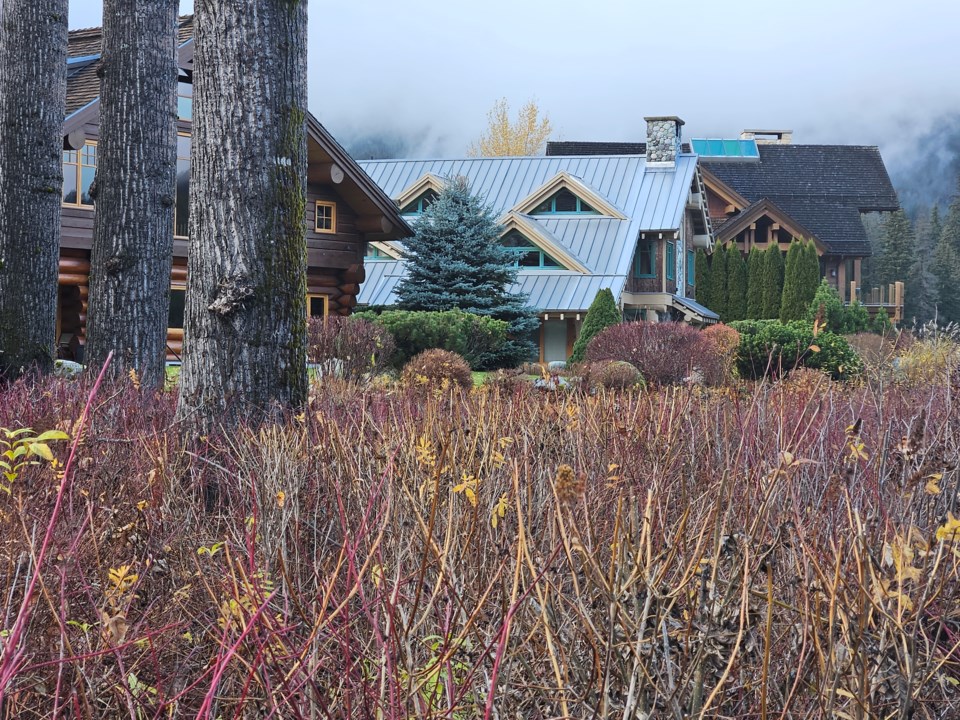The Resort Municipality of Whistler (RMOW) is once again looking into unauthorized brush cutting in a sensitive riparian zone near Green Lake, the latest instance of citizens flouting local environmental protections in an area that provides vital habitat to wildlife.
Last month, resident and Whistler Naturalists member Maeve Jones was walking from the Nicklaus North Golf Course towards Alpine Meadows when she noticed a large swath of trees and brush cut by a home at the end of the Green Lake boardwalk.
“It looks as though a homeowner was trimming the tall growth to improve their view across the lake. You'll see in photos where the trimming ends, in front of the next house's view. They also trimmed the brush on the opposite side of the Valley Trail, right at the edge of the lake,” Jones wrote in an email to the RMOW's stewardship team.
Green Lake is a hub of biodiversity. The lake and its surrounding wetland are, at various times of year, home to more than 200 bird species, not to mention the many other wildlife that frequent the glacial-fed waterway. Shorebirds such as the killdeer, the spotted sandpiper and the America pipit build nests in shoreline surrounding the lake, while other birds use the same area for breeding or as a crucial stopover on their long migratory journeys.
Jones doesn’t believe the recent trimming was done without knowledge of the area’s ecological importance. Photos she took and shared with Pique appear to show a sign erected by the RMOW in the wake of the last reported instance of brush cutting uprooted and tossed to the ground.
“It was absolutely deliberate. It’s uniform. I want to say it’s someone’s entire yard,” Jones said. “It speaks to this paradox that we love the environment so much and have such a special view that we’re going to mow down a really important piece of that environment to preserve that view.”
In a statement, the RMOW said it was aware of the recent cutting and has hung door hangers at properties nearby requesting any information the public may have.
The challenge, as it has been the past several years when similar incidents have been reported, comes down to enforcement.
“We do have a bylaw option to issue a fine, however enforcement is challenging without strong evidence,” the RMOW statement went on.
Green Lake’s shoreline-adjacent areas are divided into municipal parkland, where any vegetation cut without permission could result in a bylaw fine, while the area owned by the Nicklaus North Golf Course is subject to development-permit guidelines that, through provincial legislation and covenants, would add further protections. The RMOW said it has also reported the issue to B.C.’s Ministry of Land, Water, and Resource Stewardship to assist with enforcement.
“Unfortunately, this is not the first time vegetation has been cut in this area,” the municipality said. “Our bylaw and environmental stewardship teams are regrouping to come up with some options to avoid future issues in this area.”
Brush-cutting in shoreline areas, as well as members of the public failing to heed fencing and signage around the small, sandy delta known as the “Fitz fan” at the southeast end of Green Lake—one of only two remaining sandy deltas in Whistler, providing vital habitat to dozens of bird species—has been a persistent issue over the past several years.
Councillor Cathy Jewett, who has toured the site of previous unauthorized brush cutting, believes the issue can be boiled down to entitlement.
“God, I hate to say it, but I think it’s entitlement by the people cutting it, that they feel they are able to alter that piece of habitat,” she said.
A contributing factor is the overlapping jurisdictional powers at play. Waterways are federal jurisdiction, while the province owns nearly all freshwater and saltwater foreshore. Land adjacent to foreshore can be privately owned.
“It’s like the barges thing; we can’t touch them unless they’re touching the shore,” said Jewett, referring to the illegal docks and barges on Whistler’s lakes the RMOW has been trying to bring into compliance in recent years.
With gaps in enforcement and education proving ineffective, Jones suggested taking a page out of an Australian playbook. In September, Lane Cove council erected a large, red banner blocking homes’ prized views of Sydney Harbour after nearly 300 trees were cut down last year on the foreshore. The double-sided sign, spanning seven metres, read in part: “Trees shouldn’t die for a view.”
“It could incentivize witnesses to self-monitor, neighbours might be more likely to ask their neighbours not to do that … and it could spark a conversation in the neighbourhood or strata,” Jones said. “Having a culture of a neighbourhood deciding not to do this is really the ideal outcome.”






